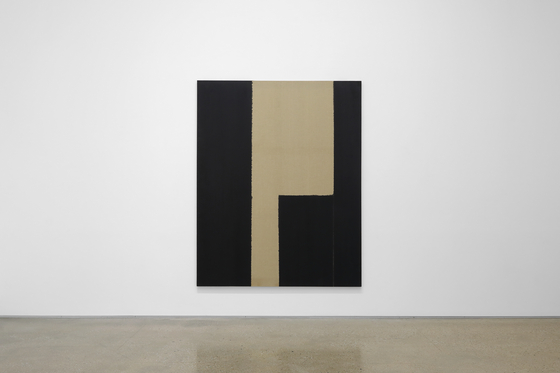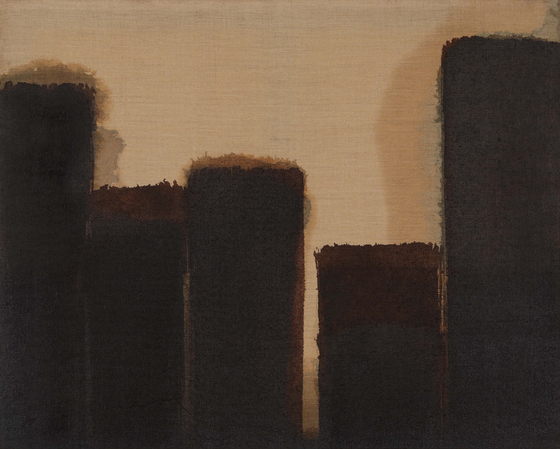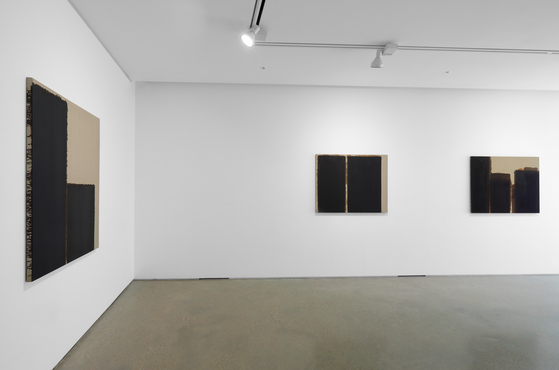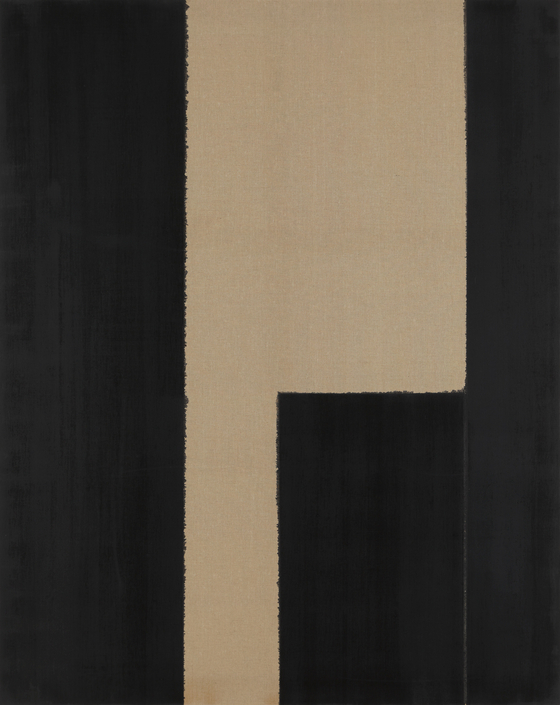PKM showcases later works of Yun Hyong-keun

PKM Gallery's exhibition ’Yun Kyong-keun 1989-1999“

Yun Hyong-keun's (1928-2007) "Burnt Umber _ Ultramarine" (1977-1989) Oil on linen, 73x91cm
PKM Gallery’s new exhibition titled “Yun Kyong-keun 1989-1999” is quite self-explanatory: It looks at Yun’s works created between the years 1989 and 1999, when he pushed his own boundaries by making bolder movements in both form and color.
“With the heightened interest in dansaekhwa, people tend to focus too much on the earlier works rather than his whole career,” said Park Kyung-mee, president of PKM Gallery.
“But looking at Yun’s works, his pieces from the 1980s and 1990s take up a big part of his artistic world, which matured and was perfected with time. We thought we’d change the perspective for this exhibition.”
This exhibition is therefore not only about Yun’s signature monochrome paintings and his philosophy behind the works, but also about how those works developed even more over the course of his later years. To show how his ideas changed, works that are similar to each other are displayed together to show the course of Yun’s thoughts, rather than a linear chronological order.
This provides a “visual representation of how his works influence each other back and forth over time,” according to Park.

PKM Gallery's exhibition ’Yun Kyong-keun 1989-1999“
“His later works are reminiscent of his signature usage of columns, which he showed through his ‘Heaven and Earth’ series, as well as the smudging effects from the ink running on the canvas. But at the same time, it shows the transition in his formation that he picked up after becoming close with Donald Judd [1925-1994] in 1991,” said Park.
For instance, hung along with Yun’s works are calligrapher Kim Jeong-hui’s (1786-1856) calligraphy “A Tree Shall Blossom, A Flower Shall Fruit,” as well as Donald Judd’s “Untitled” (1983-1985) etching on paper. These two are representative pieces that each symbolize Yun’s Eastern philosophy and Western art technique. “A Tree Shall Blossom, A Flower Shall Fruit” means that the only way people can live a right and just life is through practice and self-reflection.
Yun is said to have lived an honest and scholarly life, taking inspiration from ancestral nobles who believed that art exudes from one’s mind ? the subject of Kim’s calligraphy. Stylistically, Yun’s encounter with Judd elevated his work to another level by bringing him closer to Western Minimalism. Yun even kept a copy of Judd’s prints at his studio to draw inspiration from.

Yun Hyong-keun's (1928-2007) "Burnt Umber _ Ultramarine Blue" (1999) Oil on linen, 227x181.5cm
“The way an individual is assessed by others differs according to the people who are making the judgments,” said Park. “But for Yun, no one would refute how respectable he was as both a person and artist. Even after his death, his good spirit spreads. I sincerely hope that his value is truly recognized by the world.”
PKM Gallery opened up a new online viewing room for visitors, to encourage people to view Yun’s masterpieces from home during the coronavirus social distancing guidelines. Saxophone player KimOki has composed new music inspired by Yun’s works, and it will be released online in early May. A virtual reality guide of the exhibition is also getting its final touches before it’s released this month. The exhibition will run until June 20.
BY YOON SO-YEON [yoon.soyeon@joongang.co.kr]










with the Korea JoongAng Daily
To write comments, please log in to one of the accounts.
Standards Board Policy (0/250자)